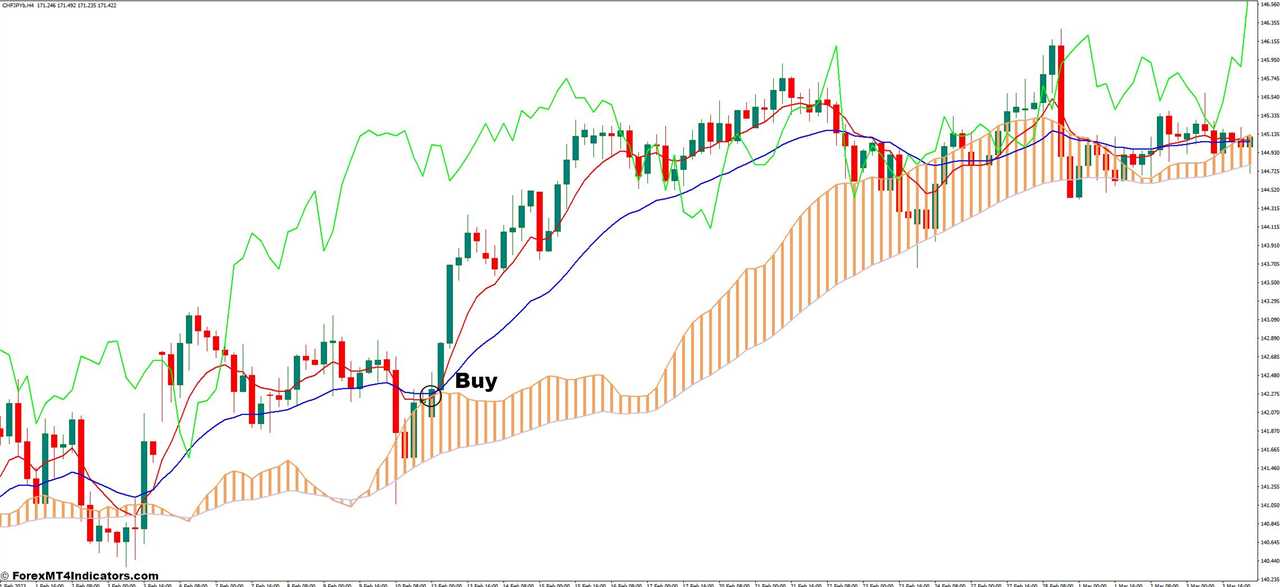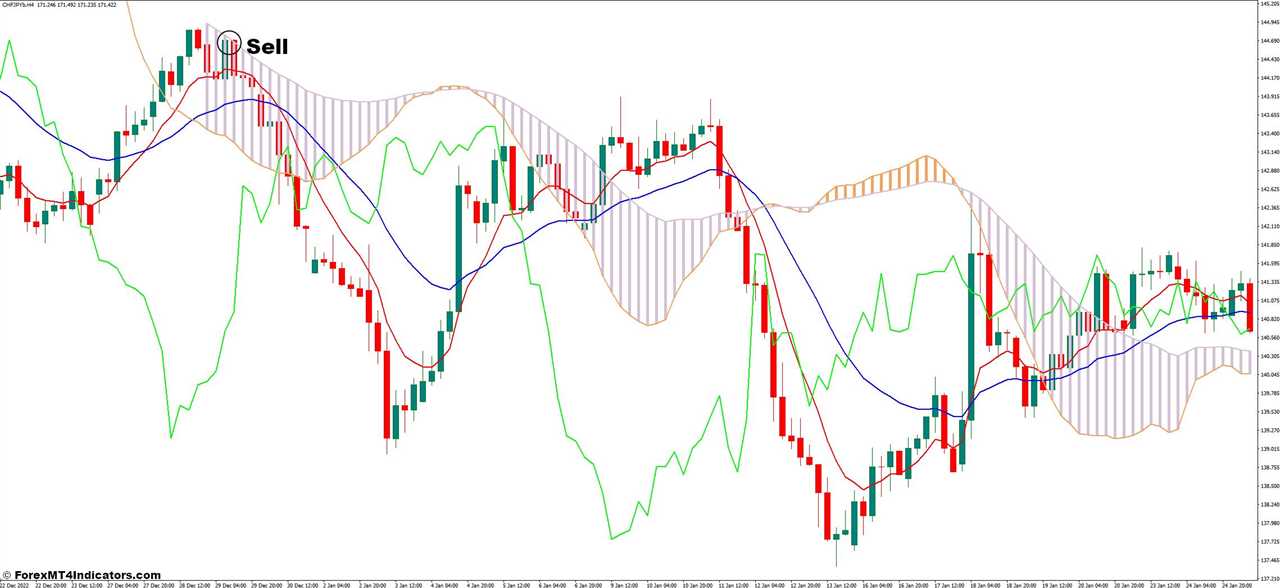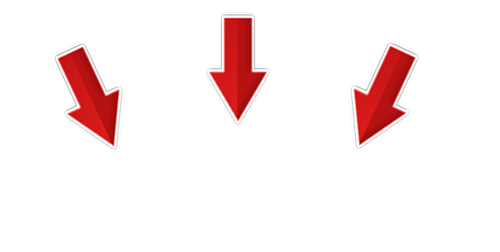||
The ever-evolving world of financial markets demands resourceful tools to navigate the complex dance of prices. Enter the Ichimoku Cloud MT4 Indicator, a captivating blend of tradition and technology, empowering traders with a multifaceted approach to market analysis. This guide dives deep into the intricacies of the Ichimoku Cloud, exploring its components, interpreting its signals, and harnessing its potential within the user-friendly MT4 platform.
Unveiling the Ichimoku Cloud
The Ichimoku Cloud, also known as Ichimoku Kinko Hyo, translates to “equilibrium chart at a glance.” Developed by Japanese journalist Goichi Hosoda in the 1930s, it aimed to capture the essence of trend, support, resistance, and momentum – all within a single, visually intuitive indicator. Over the decades, the Ichimoku Cloud has transcended geographical boundaries, becoming a trusted companion for traders worldwide.
The MT4 platform, short for MetaTrader 4, is a widely adopted trading platform offering a customizable environment for various technical analysis tools. The marriage of the Ichimoku Cloud with MT4 empowers traders with a powerful combination, leveraging the indicator’s insightful calculations with the platform’s user-friendly interface.
Building Blocks of the Ichimoku Cloud
The Ichimoku Cloud is an intricate tapestry woven from five key components, each contributing to its comprehensive analysis. Let’s embark on a journey to understand these building blocks:
- Tenkan-sen (Conversion Line): This line represents the average of the highest and lowest price over a short-term period, typically 9 days. Imagine it as a quick snapshot of the market’s immediate directional bias.
- Kijun-sen (Base Line): The Kijun-sen acts as a mid-term anchor, calculated as the average of the Tenkan-sen and the closing price over a slightly longer timeframe, usually 26 days. Think of it as a more grounded perspective, tempering the short-term fluctuations.
- Senkou Span A (Leading Span A): This line is a projection of the future, calculated as the average of the Tenkan-sen and Kijun-sen, but shifted forward by a specific number of days (often 26). Envision it as a compass pointing towards where price might be headed based on current momentum.
- Senkou Span B (Leading Span B): The Senkou Span B serves as a dynamic support/resistance zone, derived from the highest high and lowest low over a longer timeframe (typically 52 days). Consider it a cloud-like boundary, offering potential areas where price might find temporary pause or reversal.
- Chikou Span (Lagging Span): This line reflects the closing price of a specific number of days ago (often 26 days). Think of it as a mirror reflecting past price action, offering insights into prior momentum and potential future direction.
The interplay between these elements forms the Kumo (Cloud), the heart of the Ichimoku Cloud. The cloud’s thickness and color (typically green for bullish and red for bearish) provide valuable clues about trend strength and potential turning points.
Interpreting Ichimoku Cloud Signals
Now that we’ve familiarized ourselves with the building blocks, let’s decipher their messages. Here’s how the Ichimoku Cloud speaks to traders:
- Identifying Trends: Price and Cloud Relationship – When the price sits above the Kumo, it often suggests a bullish trend. Conversely, price dwelling below the cloud hints at a bearish bias. The thickness and color of the cloud further enhance the signal’s strength. A thicker, green cloud reinforces an uptrend, while a thin, red cloud suggests a weakening downtrend.
- Support and Resistance Levels with the Ichimoku Cloud – The Senkou Span B, particularly its upper and lower boundaries, can act as dynamic support and resistance zones. Price approaching these levels might encounter temporary buying or selling pressure. The Kijun-sen can also offer additional support/resistance, especially during trend consolidation phases.
- Trend Confirmation with Crossovers and Breakout Strategies – Crossovers between the Tenkan-sen and Kijun-sen can signal potential trend changes. A bullish crossover occurs when the Tenkan-sen rises above the Kijun-sen, and vice versa for a bearish crossover. Breakouts from the Kumo cloud can also be significant. A price surge above the cloud often strengthens a bullish bias, while a break below reinforces a downtrend. However, it’s crucial to remember that these signals are not guarantees, and confirmation from other indicators or price action is always recommended.
- Divergence Between Price and Ichimoku Lines – Divergence, a disagreement between price action and the Ichimoku Cloud, can be a valuable tool to identify potential trend reversals. For instance, if the price continues to rise while the Ichimoku Cloud slopes downwards, it might signal a weakening uptrend and a potential bearish reversal. Conversely, a falling price with an upward-sloping Ichimoku Cloud could suggest a temporary pullback within a larger uptrend.
Customizing the Ichimoku Cloud Indicator in MT4
The beauty of the Ichimoku Cloud MT4 Indicator lies in its customizability. MT4 allows you to fine-tune the indicator’s parameters to suit your trading style and preferred timeframe. Here’s how:
- Adjusting Indicator Parameters in MT4 – Access the Ichimoku Cloud settings within the MT4 platform. You can modify the calculation periods for the Tenkan-sen, Kijun-sen, Senkou Spans, and Chikou Span. Experimenting with different settings can help you discover a configuration that aligns with your trading approach and the specific market you’re analyzing.
- Color Coding for Improved Visualization – MT4 allows you to customize the color scheme of the Ichimoku Cloud components. Consider using distinct colors for the Tenkan-sen, Kijun-sen, and the cloud itself to enhance visual clarity and make it easier to identify trends and signals.
- Adding Additional Lines for Enhanced Analysis – The MT4 platform empowers you to add further lines to the Ichimoku Cloud for more in-depth analysis. For example, some traders include Fibonacci retracement levels or moving averages alongside the Ichimoku Cloud to gain additional insights into potential support and resistance zones.
- Saving Customized Ichimoku Cloud Settings – Once you’ve established your preferred Ichimoku Cloud configuration, save it as a template within MT4. This allows you to easily apply your customized settings to different charts without having to reconfigure the indicator every time.
By leveraging MT4’s customization features, you can transform the Ichimoku Cloud into a personalized analysis tool that caters to your specific trading needs.
Trading Strategies with the Ichimoku Cloud MT4 Indicator
The Ichimoku Cloud, when combined with strategic thinking, can be a powerful weapon in your trading arsenal. Here are some popular trading strategies that utilize the Ichimoku Cloud MT4 Indicator:
- Trend-Following Strategies with Confirmation Signals – During a confirmed uptrend (price above the cloud, bullish crossover, and green cloud), traders can look for opportunities to enter long positions (buying) when the price retraces towards the Kumo or Kijun-sen. Conversely, in a confirmed downtrend, short positions (selling) might be considered when the price approaches the upper boundary of the cloud. Remember, always prioritize risk management and employ stop-loss orders to limit potential losses.
- Countertrend Trading with Divergence – As discussed earlier, divergence between price and the Ichimoku Cloud can signal potential trend reversals. Savvy traders can utilize this by entering short positions (selling) during a bullish divergence or long positions (buying) during a bearish divergence. However, countertrend trading is inherently riskier and requires a strong understanding of market psychology and confirmation from other technical indicators.
- Combining Ichimoku Cloud with Other Technical Indicators – The Ichimoku Cloud is a versatile tool, but it’s not a standalone solution. For a more comprehensive analysis, consider combining it with other technical indicators like Relative Strength Index (RSI) or Stochastic Oscillator. This can help to validate signals from the Ichimoku Cloud and provide a more holistic view of market conditions.
By strategically integrating the Ichimoku Cloud MT4 Indicator with other tools and sound risk management practices, you can develop a robust trading strategy that leverages the power of this multifaceted indicator.
How to Trade With Ichimoku Cloud Indicator
Buy Entry

- Price above the Ichimoku Cloud (bullish bias).
- Tenkan-sen (conversion line) crosses above Kijun-sen (base line) – bullish confirmation signal.
- Kumo (cloud) is green and relatively thin, indicating a strong uptrend.
- Entry: Consider buying near a pullback towards the Kijun-sen or the top of the cloud.
- Stop-Loss: Place a stop-loss order below the recent swing low or the bottom of the cloud, whichever is closer.
- Take-Profit: Potential take-profit levels can be based on various factors like Fibonacci retracements or predetermined profit targets. Aim for a risk-reward ratio of at least 1:2 (meaning potential profit is twice the risk).
Sell Entry

- Price below the Ichimoku Cloud (bearish bias).
- Tenkan-sen (conversion line) crosses below Kijun-sen (base line) – bearish confirmation signal.
- Kumo (cloud) is red and relatively thick, indicating a strong downtrend.
- Entry: Consider selling near a rally towards the Kijun-sen or the bottom of the cloud.
- Stop-Loss: Place a stop-loss order above the recent swing high or the top of the cloud, whichever is closer.
- Take-Profit: Potential take-profit levels can be based on various factors like Fibonacci retracements or predetermined profit targets. Aim for a risk-reward ratio of at least 1:2 (meaning potential profit is twice the risk).
Ichimoku Cloud Indicator Settings

Conclusion
The Ichimoku Cloud MT4 Indicator offers a unique blend of versatility and comprehensiveness, empowering traders to identify trends, assess support and resistance, and potentially anticipate turning points. While not a crystal ball, the Ichimoku Cloud, when skillfully combined with other technical analysis tools and a strong understanding of market dynamics, can be a valuable asset in your trading journey.
Recommended MT4/MT5 Broker
XM Broker
- Free $50 To Start Trading Instantly! (Withdraw-able Profit)
- Deposit Bonus up to $5,000
- Unlimited Loyalty Program
- Award Winning Forex Broker
- Additional Exclusive Bonuses Throughout The Year
- Exclusive 50% Cash Rebates for all Trades!

>> Sign Up for XM Broker Account here with Exclusive 50% Cash Rebates For All Future Trades [Use This Special Invitation Link] <<
Already an XM client but missing out on cashback? Open New Real Account and Enter this Partner Code: 𝟕𝐖𝟑𝐉𝐐
(Free MT4 Indicators Download)

Ichimoku Signals Cloud MT4 Indicator
||
-----------------------------------------------------
By: Tim Morris
Title: Ichimoku Signals Cloud MT4 Indicator
Sourced From: forexmt4indicators.com/ichimoku-signals-cloud-mt4-indicator/?utm_source=rss&utm_medium=rss&utm_campaign=ichimoku-signals-cloud-mt4-indicator
Published Date: Fri, 29 Nov 2024 01:00:35 +0000
Read More
.png) InvestingStocksToolsClubsVideosPrivacy PolicyTerms And Conditions
InvestingStocksToolsClubsVideosPrivacy PolicyTerms And Conditions
